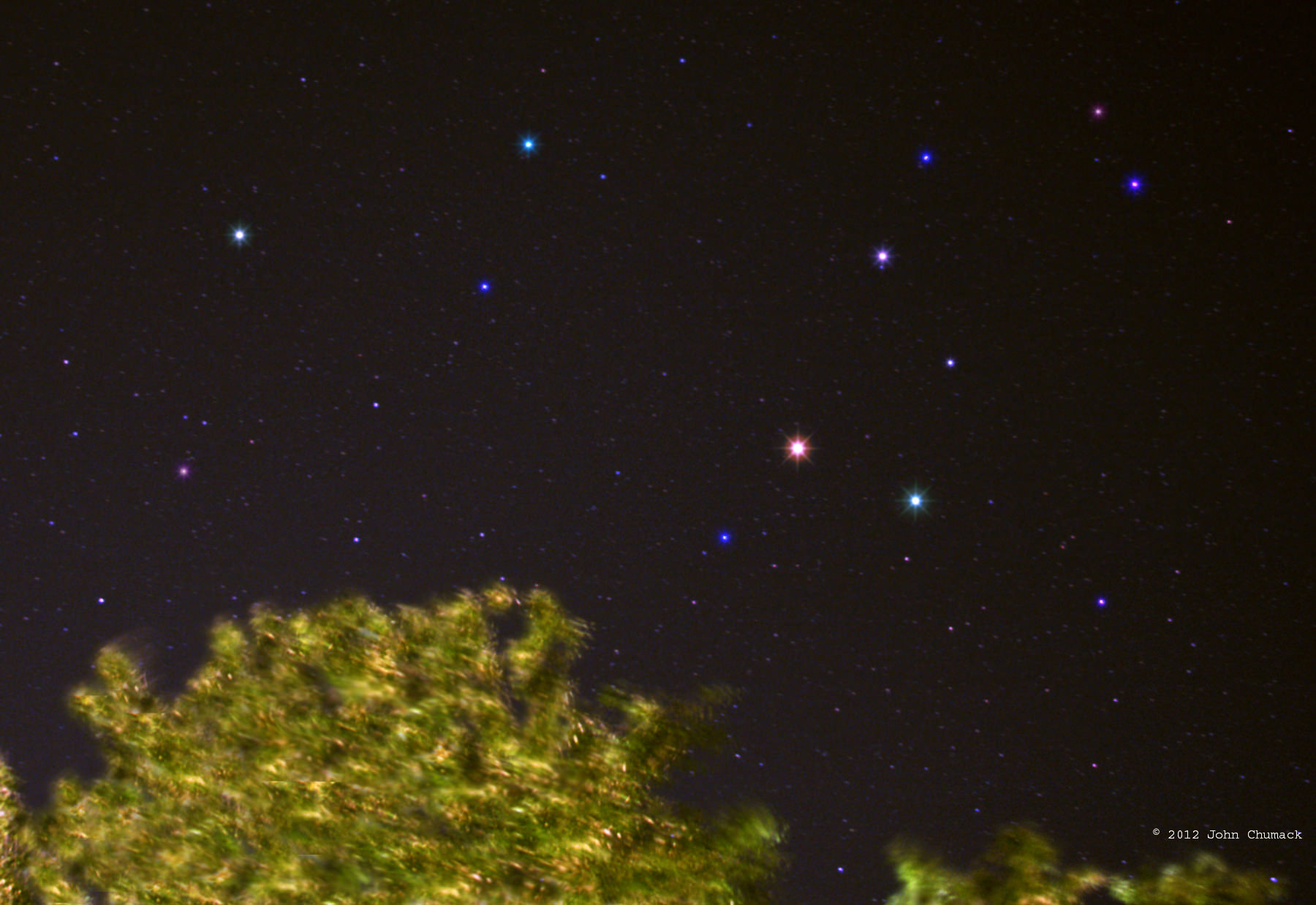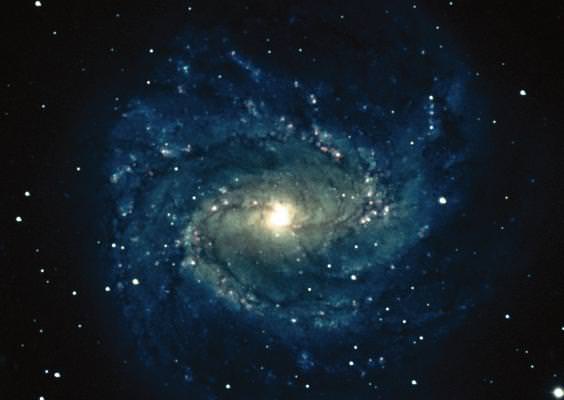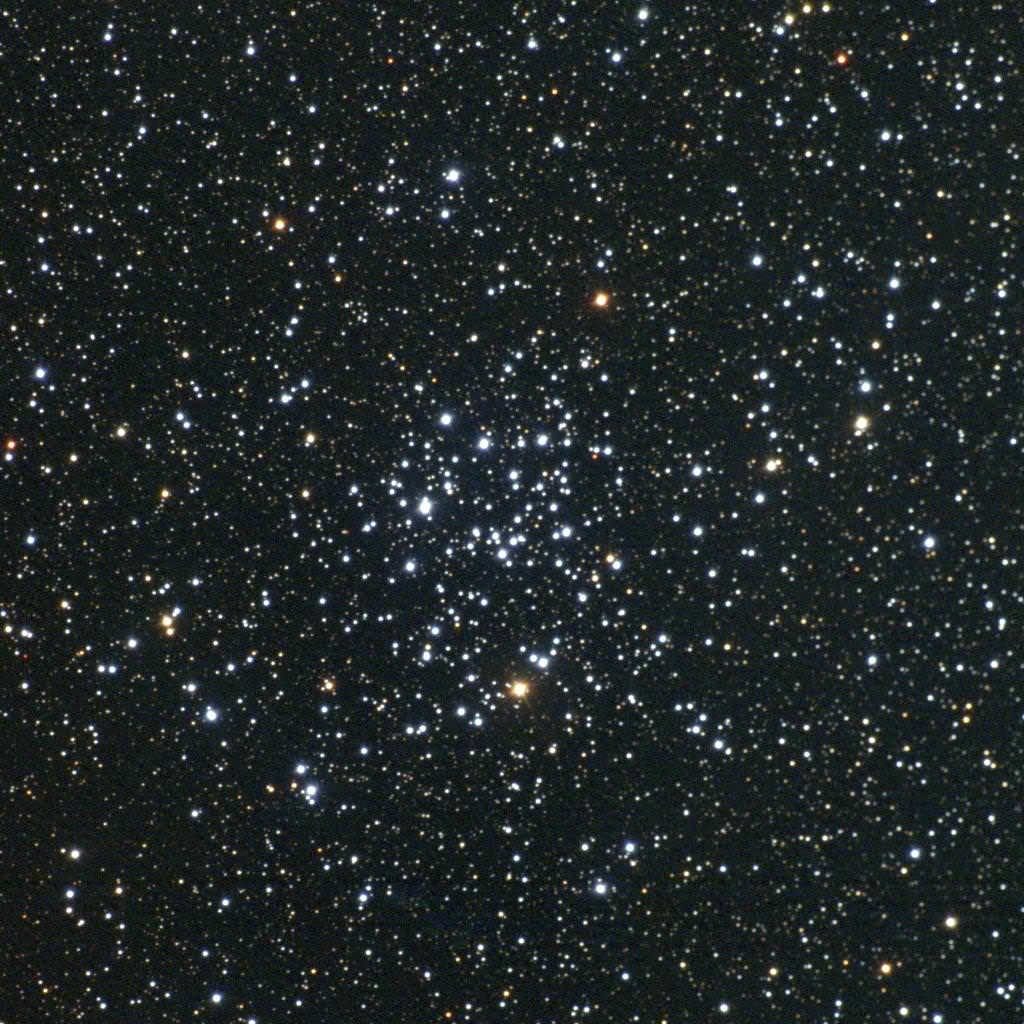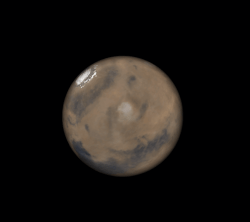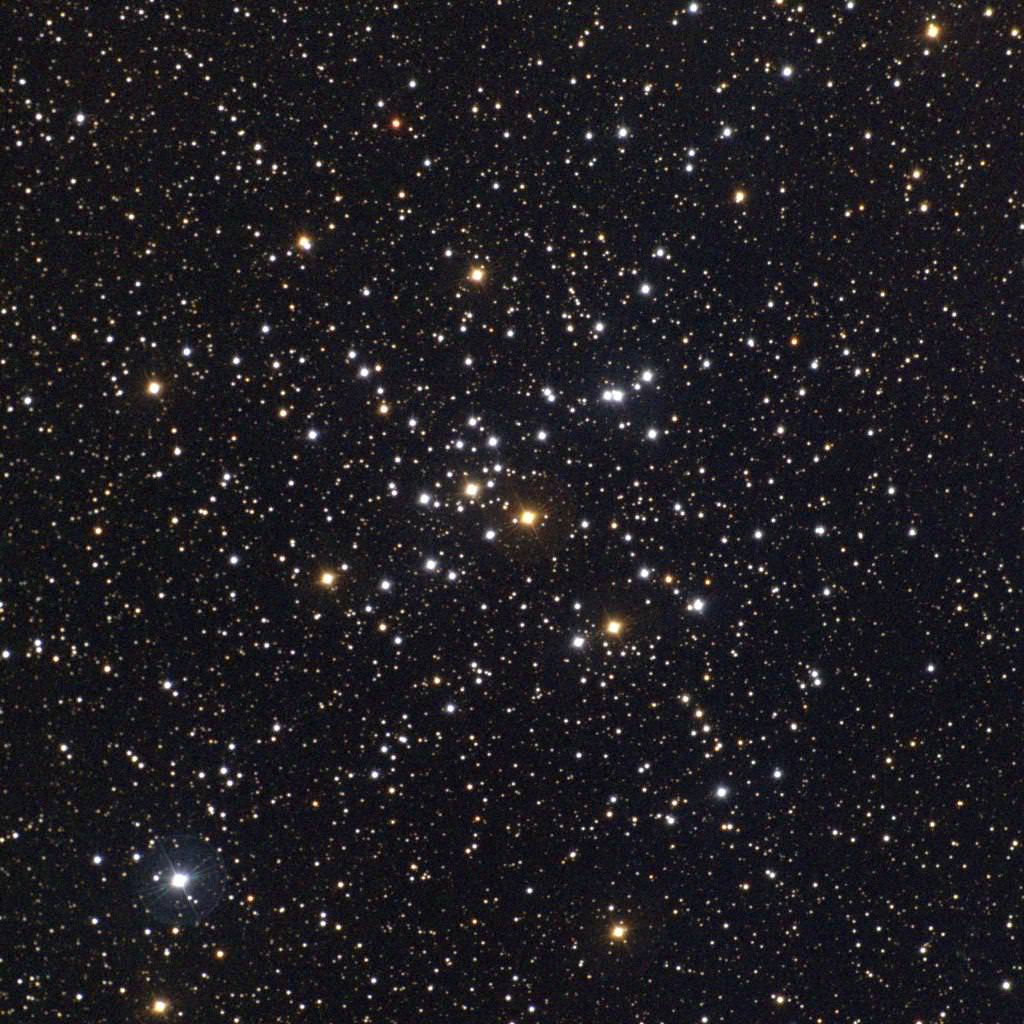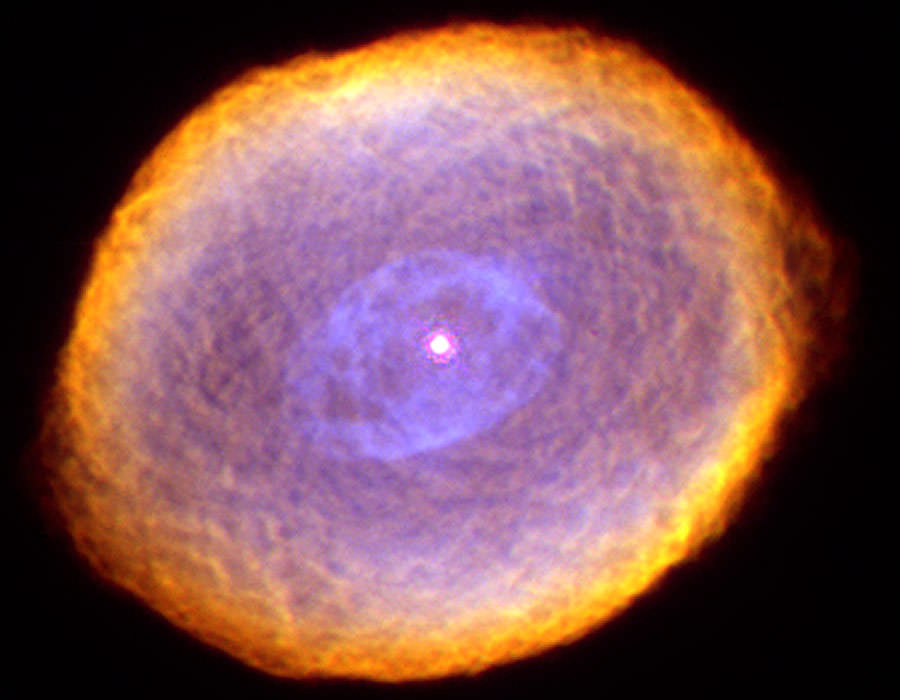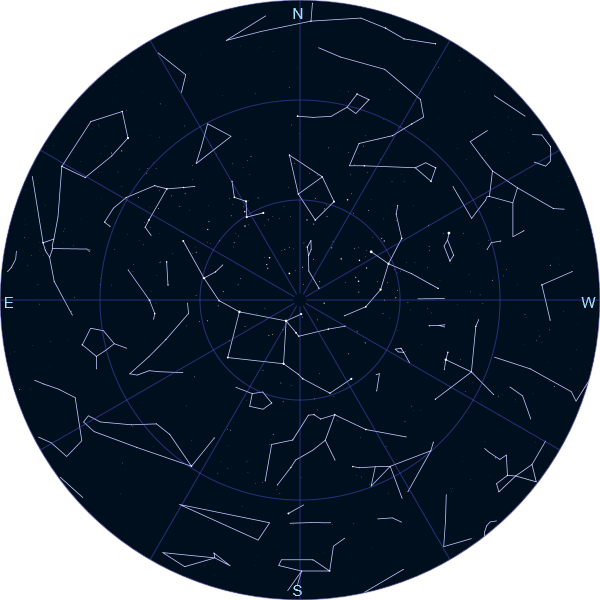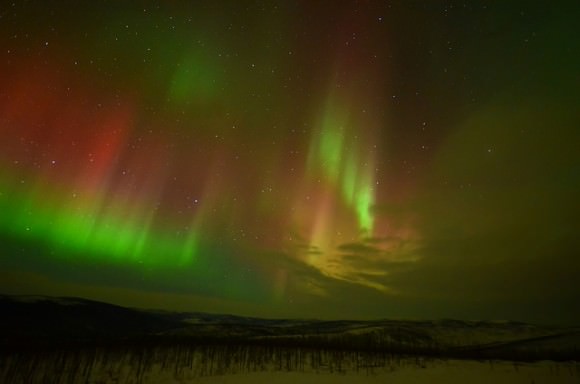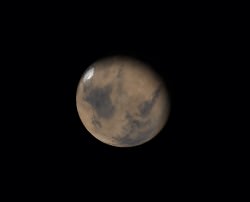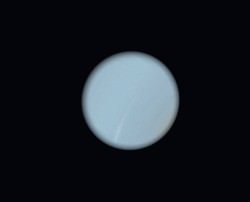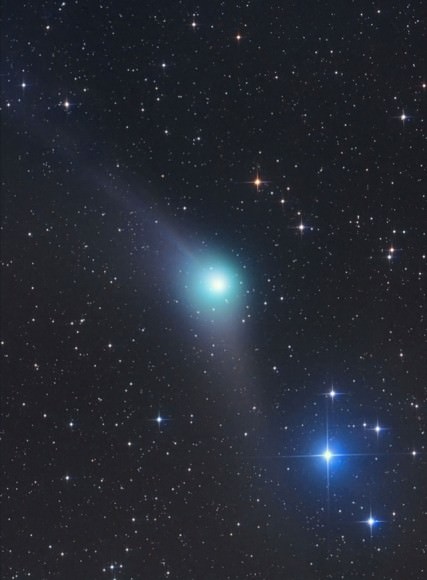[/caption]
Greetings, fellow SkyWatchers! What a great week to just enjoy some great unaided eye astronomy observations. Who can resist the beautiful appearance of Mars in Leo? Also this week, you’ll enjoy not one – but two – meteor showers as the Mu Virginids come to town mid-week and the Bootids light up the weekend. Get ready to enjoy bright stars, find planets, explore lunar features, learn some astronomy history and much more! When ever you’re ready, meet me in the back yard…
Monday, April 23 – Pioneer quantum physicist Max Planck was born on this day in 1858. In 1900, Max developed the Planck equation to explain the shape of blackbody spectra (a function of temperature and wavelength of emission). A “blackbody” is any object that absorbs all incident radiation – regardless of wavelength. For example, heated metal has blackbody properties because the energy it radiates is thermal. The blackbody spectrum’s shape remains constant, and the peak and height of an emitter can be measured against it – be it cosmic background radiation – or our own bodies.
Now, let’s put this knowledge into action. Stars themselves approximate blackbody radiators, because their temperature directly controls the color we see. A prime example of a “hot” star is Alpha Virginis, better known as Spica. Compare its color to the cooler Arcturus… What colors do you see? There are other astronomical delights that radiate like blackbodies over some or all parts of the spectrum as well. You can observe a prime example in a nebula such as M42, in Orion. By examining the radio portion of the spectrum, we find the temperature properly matches that of electrons involved in the process of fluorescence. Much like a common household fixture, this process is what produces the visible light we can see.
Tuesday, April 24 – Today in 1970, China launched its first satellite. Named Shi Jian 1, it was a successful technological and research craft. This achievement made China the fifth country to send a vessel into space.
Tonight see if you can spot the tender beginnings of the Moon after sunset. Observers take pleasure in sweeping the sky with small scopes and binoculars in hopes of finding the thinnest possible lunar crescent. And speaking of crescents, did you spot Venus close to the Moon? Why not take out your telescope and see what phase Venus is now in. If you don’t have a filter to cut its bright glare, try wearing sunglasses!
No telescope? No problem. You can still do some very awesome astronomy with just your eyes! Begin with locating the northern constellation of Ursa Major – most commonly known as the “Big Dipper”. Take note of the curve of the Dipper’s “handle” and trace it from the bottom of the cup and continue on the “Arc to Arcturus”. Keep moving, because now you’re going to “Speed on to Spica”! Once you’ve located this bright, blue/white star, simply look to its east/southeast (or upper left) for a yellow appearing “star”. That’s no star… That’s Saturn!
Now let’s have a look at 140 light-year distant Epsilon Hydrae – the northernmost star in the small circlet east of Procyon. While it and Rho will make a beautiful visual double for binoculars, Epsilon itself is a multiple system. Its A and B components are a tough split for any scope, but the 8th magnitude C star is easier. The D component is a dwarf star.
Wednesday, April 25 – Today marks the 15th anniversary of the deployment of Hubble Space Telescope. While everyone in the astronomical community is well aware of what this magnificent telescope “sees,” did you know that you can see it with just your eyes? The HST is a satellite that can be tracked and observed. Visit heavens-above.com and enter your location. This page will provide you with a list of visible passes for your area. Although you can’t see details of the scope itself, it’s great fun to track with binoculars or see the Sun glinting off its surface in a scope.
Tonight our first voyage is to the Moon’s surface. Look along the terminator in the southern quadrant and revisit ancient old crater Furnerius. Named for French Jesuit mathematician George Furner, this crater spans approximately 125 kilometers and is a lunar club challenge. Power up and look for two interior craters. The smaller is crater A and it spans a little less than 15 kilometers and drops to a depth of over 1000 meters. The larger crater C is about 20 kilometers in diameter, but goes far deeper, to more than 1400 meters. That’s about as deep as a coral will grow under the Earth’s oceans!
Keep a watch on the skies while you’re out as the Mu Virginid meteor shower reaches its peak at 7 to 10 per hour. With dark skies tonight, you still might catch one of these medium speed meteors radiating from a point near the constellation of Libra.
Thursday, April 26 – On this date in 1920, the Shapely-Curtis debate raged in Washington on the nature of and distance to spiral nebulae. Shapely claimed they were part of one huge galaxy to which we all belonged, while Curtis maintained they were distant galaxies of their own. Thirteen years later on the same date, Arno Penzias was born. He went on to become a Nobel Prize winner for his part in the discovery of the cosmic microwave background radiation, through searching for the source of the “noise” coming from a simple horn antenna. His discovery helped further our understanding of cosmology in ways that Shapely and Curtis could have never dreamed of.
Perhaps they dreamed of Moon? We’ve got Moon! No matter, what we really want to do is revisit and study a changeable, sometimes transient, and eventually bright feature on the lunar surface – crater Proclus. At around 28 kilometers in diameter and 2400 meters deep, Proclus will appear on the terminator on the west mountainous border of Mare Crisium. For many viewers tonight, it will seem to be about 2/3 black, but 1/3 of the exposed crater will be exceptionally brilliant – and with good reason. Proclus has an albedo, or surface reflectivity, of about 16%, which is an unusually high value for a lunar feature. Watch this area over the next few nights as two rays from the crater will widen and lengthen, extending approximately 322 kilometers to both the north and south. Congratulations on another lunar club challenge!
Friday, April 27 – Tonight we’re heading towards the lunar surface to view a very fine old crater on the northwest shore of Mare Nectaris – Theophilus. Slightly south of mid-point on the terminator, this crater contains an unusually large multiple-peaked central mountain which can be spotted in binoculars. Theophilus is an odd crater, one that is a parabola – with no area on the floor being flat. It stretches across a distance of 100 kilometers and dives down 440 meters below the surface. Tonight it will appear dark, shadowed by its massive west wall, but look for sunrise on its 1400 meter summit!
Now, let’s try picking up a globular cluster in Hydra that is located about 3 fingerwidths southeast of Beta Corvus and just a breath northeast of double star A8612 – M68 (Right Ascension:12 : 39.5 – Declination: -26 : 45). This class X globular was discovered in 1780 by Charles Messier and first resolved into individual stars by William Herschel in 1786. At a distance of approximately 33,000 light-years, it contains at least 2000 stars, including 250 giants and 42 variables. It will show as a faint, round glow in binoculars, and small telescopes will perceive individual members. Large telescopes will fully resolve this small globular to the core!
While you’re out, have a look at 27 Hydrae about a fingerwidth southwest of Alpha. It’s an easy double for any equipment with its slightly yellow 5th magnitude primary and distant, white, 7th magnitude secondary. Although it is wide, the pair is a true binary system.
Saturday, April 28 – Today was a very busy day in astronomy history. Newton published his Principia in 1686 on April 28. In 1774, Francis Baily was born. He went on to revise star catalogs and explain the phenomenon at the beginning and ending of a total solar eclipse which we know as “Baily’s Beads.” 1900 saw the birth of Jan Hendrick Oort, who quantified the Milky Way’s rotation characteristics and envisioned the vast, spherical area of comets outside our solar system that we now call the Oort Cloud. Last, but not least, was the birth of Bart Jan Bok in 1906 who studied the structure and dynamics of the Milky Way.
Tonight’s outstanding lunar feature will be crater Maurolycus just southwest of the three rings of Theophilus, Cyrillus and Catharina. This lunar club challenge spans 114 kilometers and goes below the lunar surface by 4730 meters. Be sure to look for Gemma Frisius just to its north.
Now let’s check out a dandy little group of stars that are about a fistwidth southeast of Procyon and just slightly more than a fingerwidth northeast of M48. Called C Hydrae, this group isn’t truly gravitationally bound, but is a real pleasure to large binoculars and telescopes of all sizes. While they share similar spectral types, this mixed magnitude collection will be sure to delight you!
For SkyWatchers, no equipment is necessary to enjoy the Alpha Bootid meteor shower – despite the Moon. Pull up a comfortable seat and face orange Arcturus as it climbs the sky in the east. These slow meteors have a fall rate of 6 to 10 per hour and leave very fine trails, making an evening of quiet contemplation most enjoyable.
Sunday, April 29 – Before we explore space, let’s have a look at the Moon and the close apparition of Regulus and Mars! The three make a wonderful “line up” the night sky! Now, let’s start our lunar observations tonight as challenge craters Cassini and Cassini A come into view just south of the black slash of the Alpine Valley. The major crater spans 57 kilometers and reaches a floor depth of 1240 meters. The challenge is to also spot the central crater A, which is only 17 kilometers wide, yet drops down another 2830 meters below the surface.
While we’re out, have a look at R Hydrae about a fingerwidth east of Gamma – which is a little more than fistwidth south of Spica. R is a beautiful, red, long-term variable first observed by Hevelius in 1662. Located about 325 light-years from us, it’s approaching – but not that fast. Be sure to look for a visual companion star as well!
Until next week? Dreams really do come true when you keep on reaching for the stars!
Many thanks to John Chumack of Galactic Images for his outstanding photo of “Leo In Mars”!

